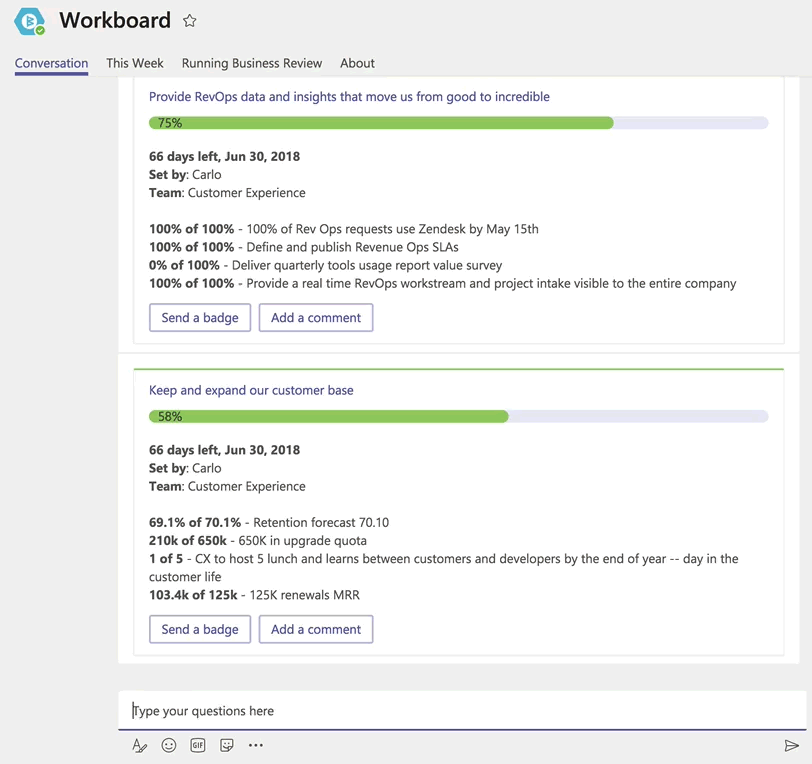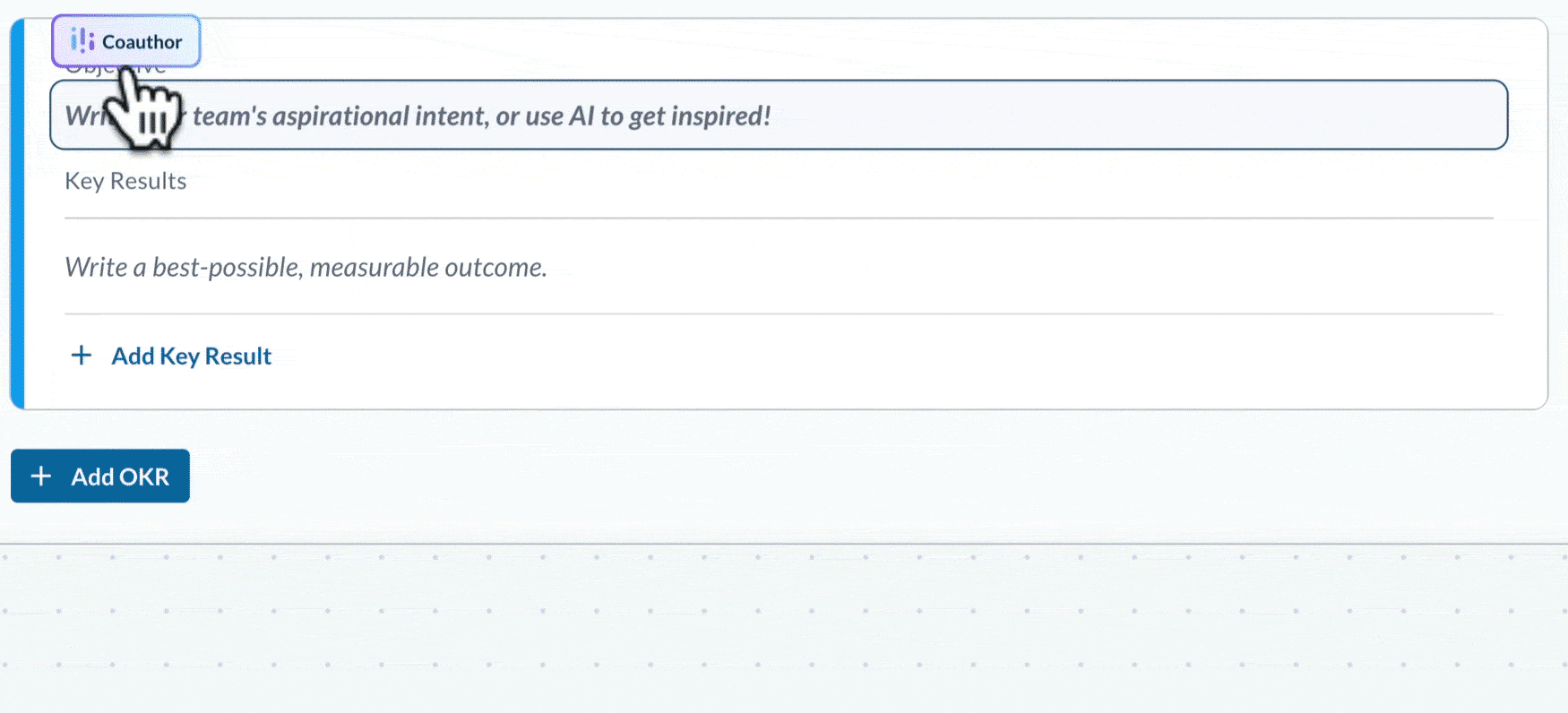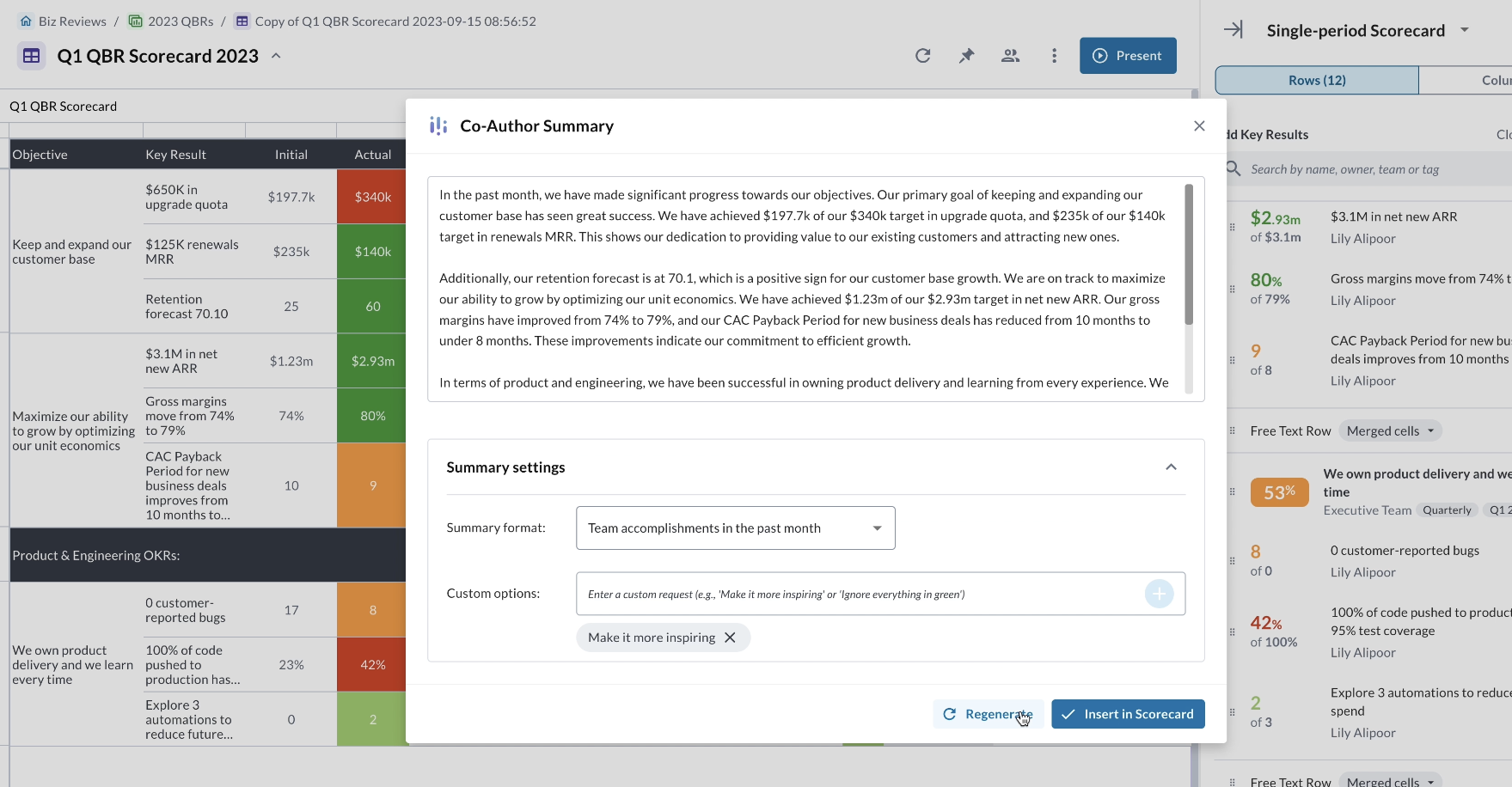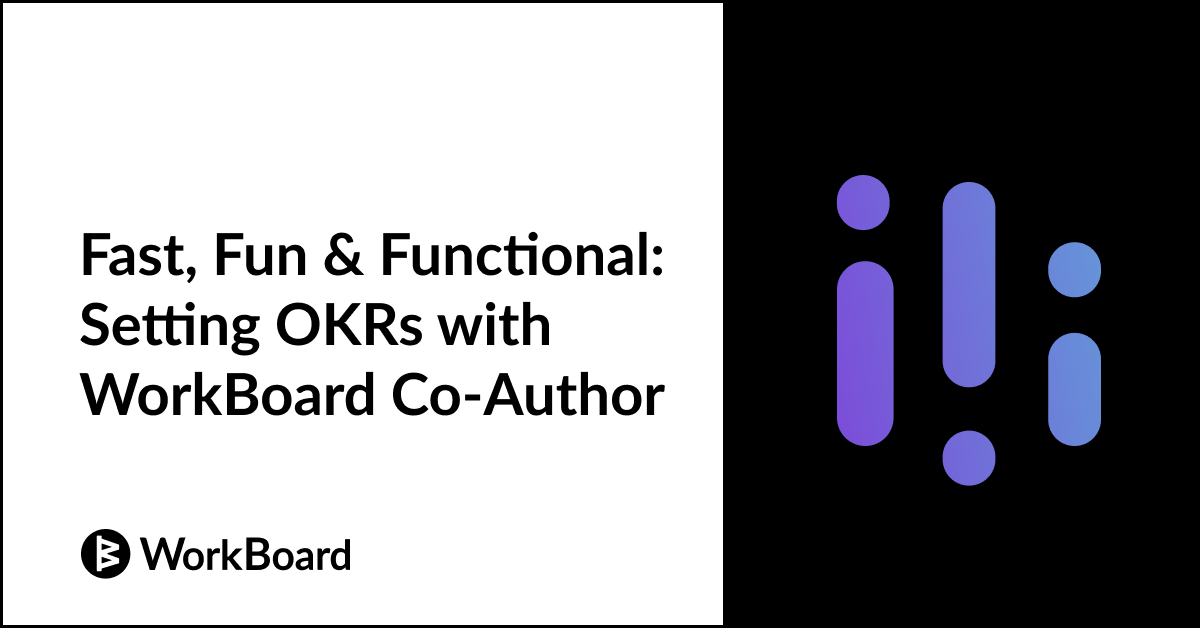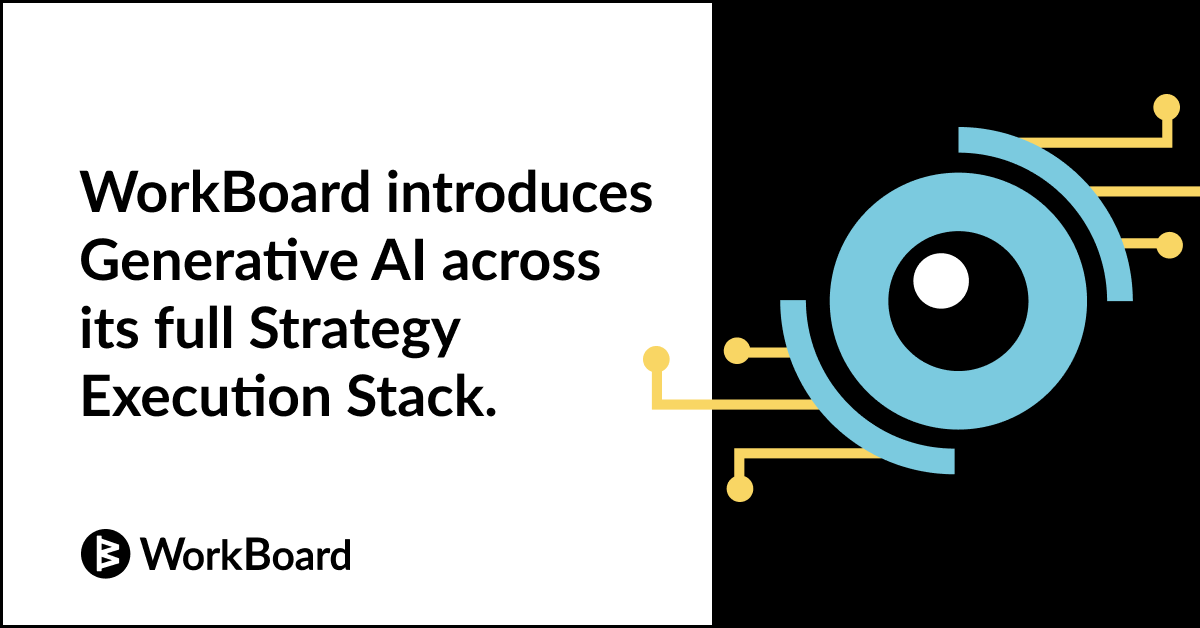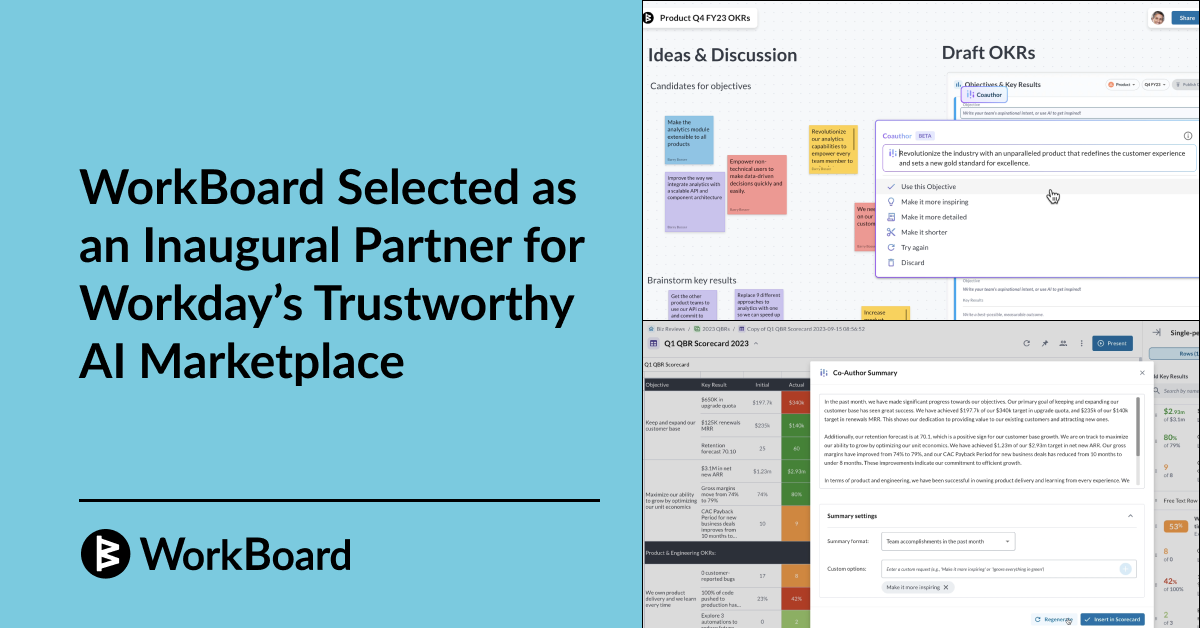David Chase, VP of Marketing at WorkBoard: I recently had the chance to chat with WorkBoard CTO and Co-Founder Daryoush Paknad about how artificial intelligence is transforming the workplace. As a seasoned tech founder, Daryoush has participated in several major technology shifts, from mainframes to client server, from data centers to cloud computing and more. Each disrupted the generation before it permanently.
Do you think GenAI is worth all the hype?
What’s helpful about being a tech founder over 40 years old is you observe patterns over time – watch three or four rodeos and you get a different perspective. Understanding patterns of disruption is especially useful now.
I've had a front row seat and was hands on in some of the most tectonic technology shifts over my career:
- My first job was deploying visual interfaces, a shift from command line interfaces that only experts could use to graphical UIs that made PCs accessible to everyone (for Apple)
- Mainframes → UNIX client server (I was at Sun Microsystems)

Daryoush Paknad
CTO & Co-Founder, WorkBoard
- The publishing shift enabled by Adobe where I was on the first Acrobat dev team
- The emergence of the internet and web browsers (I was at Netscape)
- The transition from on-premises enterprise software to cloud computing (CoVia the first company I founded was born in the cloud)
Each of these generational shifts was massively disruptive to the status quo and to the companies anchored in the previous computing paradigm.
“Our journey with AI and ML began in 2015. From the outset, we envisioned using AI to help managers operate at their best whatever their level of maturity or seniority was.”
While we're still in the early days of GenAI, it is as transformational and perhaps even more so than these other shifts. It will have a similar impact on the tech world, but it has much greater potential to impact the entire world.
So, do I think GenAI is worth the hype? Absolutely. It will change everything we do on the web, on our devices, on every form of computer we use and so much more.
For the folks under 40, how did those shifts play out?
History is a great teacher if you’re a great student!
In these kinds of disruptive shifts, legacy companies’ strengths often became weaknesses — their skills, processes, investments, IP, habits, mindsets and more are entrenched in the prior generation; their ability to adapt was limited and their financial incentives to adapt quickly were equally limited. Some were limited by their imagination of a future any different than their past. And then it was too late.
“History is a great teacher if you’re a great student!”
In the past 10 years, we’ve seen examples of success if you look at the transition to SaaS that Cisco, VMware, Juniper, Microsoft, and others had to make. Some saw it early, some had to catch up with how customers wanted to purchase and consume products. Most had legacy business models and technology structures that made the shift difficult. (WorkBoard helped these companies drive those SaaS strategies more effectively, by the way.)
With GenAI, companies’ legacy thinking, technical and customer debt, and their imaginations will again be limiting factors in their speed and success adapting. Of course, we all suffer from limited imagination regarding AI's potential right now!
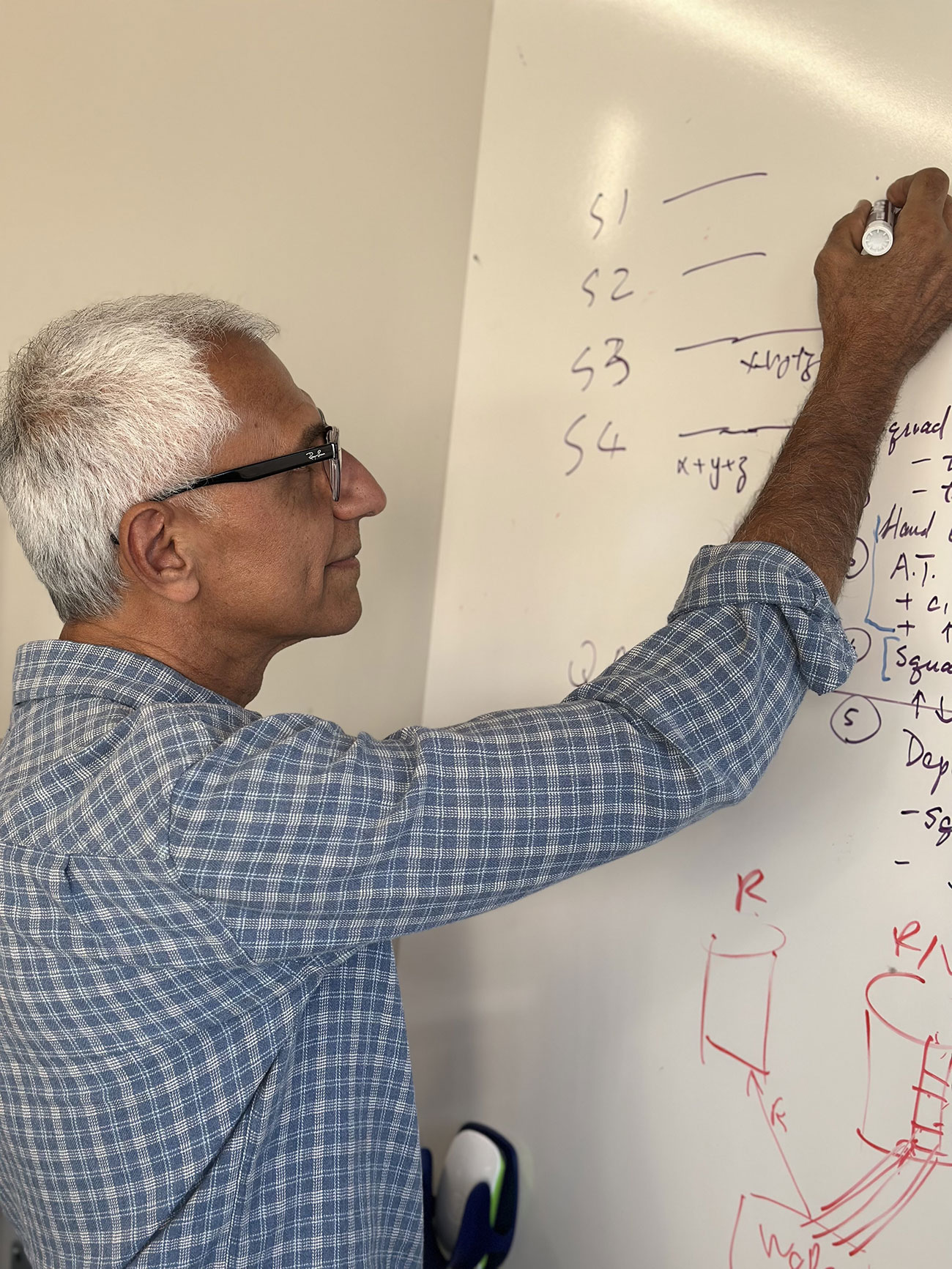
When did WorkBoard first start using AI and ML?
Our journey with AI and ML began in 2015 when we first started experimenting with IBM Watson. From the outset, we envisioned using AI to help managers operate at their best whatever their level of maturity or seniority was. We envisioned providing managers with in-the-moment facts, coaching, and insights to help them coach people and teams to better outcomes.
We began training Watson's early platform capabilities using our data set of management best practices, strategy pillars and themes, objectives by organization type, and success measures and so on. The idea was to enable AI-powered coaching tailored to the different conversations and situations managers had – coaching high performers vs low performers, addressing difficult situations, fostering accountability for specific outcomes and so on.
At the time, the technology simply wasn't ready to deliver on this vision. Training was a gargantuan task, and the yield wasn’t good enough. But we remained convinced that AI would transform manager effectiveness and strategy achievement eventually!
WorkBoard introduced WoBot in Microsoft Teams in 2017 – how was that built?
In 2017, we built one of the first enterprise chatbots on Microsoft Teams, named WoBot. Now, 2017 was early for bots and early for MS Teams which really became a “thing” during and perhaps because of the Covid pandemic. I think we would all be in Slack absent the events of 2020.
WoBot used ML and NLP to create a chat-based simple conversational interface for interacting with WorkBoard. Users could and still can ask questions about their OKRs, their risks, other people’s progress — even ask for Chuck Norris jokes — and get good, fast answers in natural language.
While useful, WoBot and the underlying technology couldn’t support an extended conversation or tackle complex questions. Under the hood, WoBot used Watson’s NLP, conditional decision making and scripted responses. Conversations were limited to a small range of inquiries and responses rather than open ended dialogue we know get with ChatGPT.
WoBot made it possible to provide data to and get data from WorkBoard without navigating the user interface — and our investment in that experience in 2017 was crucial because I fully expect GenAI to disrupt user interfaces and experiences as we know them now.
How is WorkBoard taking advantage of generative AI today?
I’ve been waiting for this capability for years, so we moved very very quickly to leverage large language models like GPT-3 and Codex. The sheer compute power unlocked capabilities we first envisioned back in 2015 and made it possible to finally bring them to our customers. We’ve focused efforts on
- Making it easier for teams to align, focus and collaborate on strategic priorities
- Vectorizing and preparing data so that customers can get much deeper intelligence about their strategy execution and enterprise performance patterns
Earlier this summer, we shipped Co-Author to help teams quickly set and align on OKRs. It uses generative AI to draft objectives and key results, help teams refine how they express their aspirations and measure their results. It’s a fast, fun way to set better OKRs because Co-Author gives teams near instant suggestions to react to.
This Fall, we are removing more friction by generating weekly status reports and business review summaries for users, suggesting which teams to collaborate with on key results, clustering ideas and issues from OKR retros and suggesting solutions, and more. We’re enabling voice input and chat driven interactions to remove the navigation steps and the learning curve for new users.
We are also vectorizing our extensive data set to enable prompted and unprompted recommendations. The goal is for customers to extract maximum value from their own data. While we’ve enriched the capabilities with our 10 years of expertise, much of it from our own consulting services organization, we’ve also designed our solution so that each customer’s data is isolated and there is no crossover in training or responses.
“Conversational interfaces, voice interactions, and visual responses — these will be table stakes within a year.”
What do you see on WorkBoard’s AI/ML horizon next year?
Of course, we will continue to take full advantage of the new user experiences that AI offers, and expand the conversational interfaces, enable those with voice and visuals. These are table stakes.
I'm most excited about AI capabilities that uncover buried insights and relationships in a company’s strategy and results data. When you think about strategies, aligning people on them and executing against them in a large multinational with 100,000 people and tens of thousands of products that operates in dozens of countries, you get a sense of the data set in WorkBoard.
By analyzing execution patterns across the entirety of a customer's data, we can shine a light on risks, opportunities, and network effects.
The potential from understanding patterns is tremendous but so too is the amount of data to synthesize; it’s easy to see why the compute speed and power of AI can unlock new value. Next year, we will deliver major advances in transforming this data into actionable intelligence. While I can't reveal all our plans, you can expect innovation that amplifies the enterprise value network and its intelligence.







